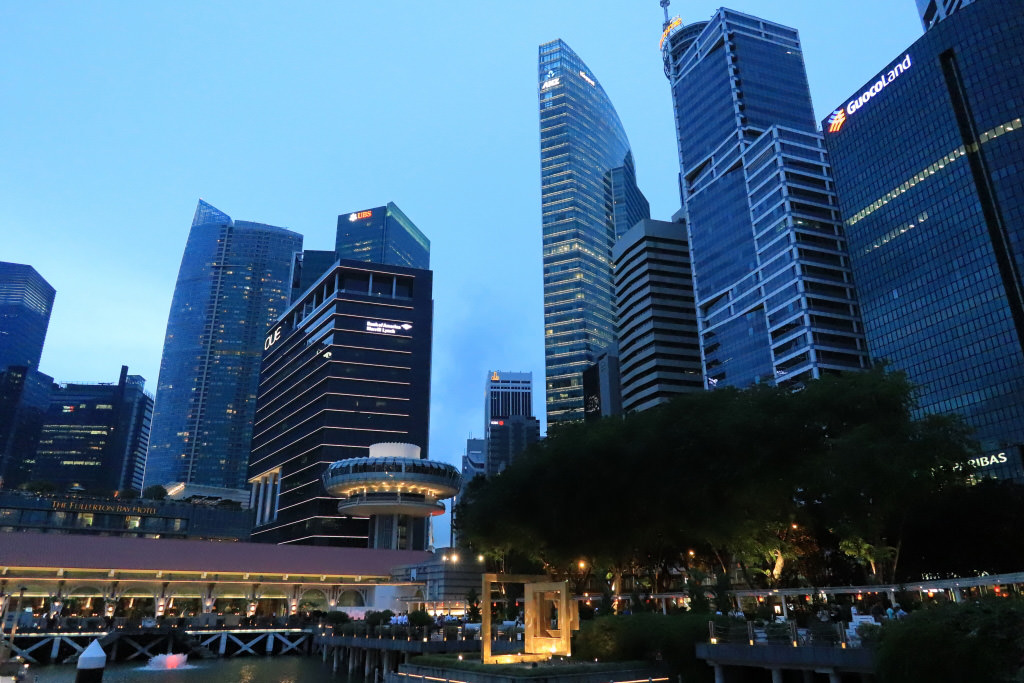PowerShot G1 X Mark III: A Street Photography Review
A compact camera that boasts an APS-C sized sensor within a lightweight body, the PowerShot G1 X Mark III promises street photographs with stunning image quality. We see how it fares on the streets. (Photo & text by: Kazuo Nakahara)

The progression to a lightweight APS-C sized camera with built-in EVF
This third-generation model in Canon’s PowerShot G1 X flagship line of compact cameras, brings with bold updates, in the form of a larger image sensor and a significantly lighter body.
The sensor size has been increased from the 1.5-inch type of its predecessors to the 24.2 megapixel APS-C size, equivalent to that used on models such as the EOS M5 and EOS 80D, making the PowerShot G1 X Mark III a compact camera with DSLR-like imaging prowess.
Furthermore, with support for Dual Pixel CMOS AF (image plane phase-difference detection), the camera is capable of faster and more accurate AF than the Contrast AF used on its predecessors. This ensures better handling of moving objects, and that you never miss a photo opportunity.
The image processor has been upgraded to the latest DIGIC 7, along with a built-in EVF that can be intuitively operated using touch operations on the LCD monitor.

PowerShot G1 X Mark III/ FL: 15mm (24mm equivalent)/ Aperture-priority AE (f/4, 1/250 sec, EV-0.3)/ ISO 6400/ WB: Auto
By equipping the camera with the 24.2-megapixel APS-C sensor and DIGIC 7 used on EOS cameras, ISO speeds of up to 25600 are supported. This allows the use of enhanced ISO speed to compensate sufficiently for aperture where necessary.
Read more about exposure basics in:
Camera Basics #3: Exposure

PowerShot G1 X Mark III/ FL: 45mm (72mm equivalent)/ Aperture-priority AE (f/8, 1/160 sec, EV+0.3)/ ISO 250/ WB: Auto
As the PowerShot G1 X Mark III fits in the palm of your hand and the lens does not protrude as far as the lens on a DSLR, you can shoot around town relatively inconspicuously. The camera lets you capture photo opportunities even with a natural stance, even as it provides an imaging performance on-par with a DSLR camera.
Moreover, it has achieved substantial weight reduction, weighing in at just 399g, which is 154g lighter than its predecessor, the PowerShot G1 X Mark II. This is close to the lightness of the PowerShot G5 X, which has a 1.0-inch type sensor and weighs 377g.
Making the camera more lightweight had been a priority in the development process, resulting in a slightly reduced maximum aperture and lens magnification factor. However, this was balanced out with the larger image sensor and enhanced performance. There was little resultant impact on bokeh and shooting performance in dark locations. When used together with digital zoom, the camera can cover a magnification factor of up to 3 times.
The PowerShot G1 X Mark III is equipped with a vari-angle LCD monitor, which allows for greater flexibility; has a dust-/water-proof mechanism, providing support in poor shooting conditions; and is also equipped with an accessory shoe, which is compatible with Speedlite flash units. The menu system has been upgraded to correspond to the menu system on EOS cameras. Not only so, the PowerShot G1 X Mark III also supports Bluetooth Low Energy technology, allowing you to always stay connected to a smartphone, enhancing its functionality. All these features suggest Canon’s efforts to build a compact camera capable of capturing all kinds of scenes.

PowerShot G1 X Mark III/ FL: 15mm (24mm equivalent)/ Aperture-priority AE (f/5.6, 1/1,000sec, EV+0.3)/ ISO 100/ WB: Auto
The lens is 24mm-equivalent at the wide-angle end, enabling you to capture a large expanse of scenery. The dynamic range has also been enhanced, keeping blowout and black crush to a minimum. The dark areas of the ship were well depicted while also maintaining the highlights created by the large area of clouds captured in the image.
I took these shots here when I went on a cruise around Southeast Asia together with my PowerShot G1 X Mark III. It was reassuring that this very lightweight camera did not hinder my activities while on the cruise, and that I could shoot without compromising on image quality and operability. Another key benefit was the availability of direct USB charging, which allowed me to travel with minimal equipment.
I had the impression that the PowerShot G1 X Mark III has very well-balanced features: It is a camera that can be easily carried around for some serious shooting, both as a secondary camera as well as a main camera.

PowerShot G1 X Mark III/ FL: 45mm (72mm equivalent)/ Shutter-priority AE (f/5.6, 1/800 sec, EV+0.3)/ ISO 125/ WB: Auto
I took this shot using Smooth Zone AF, Servo AF and continuous shooting, which are powerful features for photographing moving objects. The continuous shooting performance is equivalent to that of the EOS M5, achieving about 9 fps with AF lock and about 7 fps with subject tracking, more than sufficient for these purposes.

PowerShot G1 X Mark III/ FL: 45mm (72mm equivalent)/ Aperture Priority AE (f/5.6, 1/160 sec, EV+0.3)/ ISO 400/ WB: Auto
The vari-angle LCD monitor enables you to freely position the camera at virtually ground level for ultra-low-level shooting. Touch operations are also supported, making it easy to focus the camera when shooting using the monitor. Here, I was able to position the camera in line with the eye level of a sleepy cat.

PowerShot G1 X Mark III/ FL: 45mm (72mm equivalent)/ Aperture-priority AE (f/5.6, 1/640 sec, EV+0.3)/ ISO 100/ WB: Auto
At a focal length of 72mm at 35mm-film equivalent, you can expect to obtain a draw-in effect that looks natural. When I decided to use the leaves in the front as an accent to create some interest in the image, I managed to create a foreground bokeh that was just right. Although the maximum aperture is f/5.6 at the tele-end, the large image sensor made it possible to obtain a creamy bokeh.
SPECIFICATIONS
Image sensor: APS-C size CMOS
Effective pixel count: Approx. 24.2 megapixels
ISO speed: Normal 100-25600
Continuous shooting speed: Approx. 7 fps (when using AF tracking)/ 9 fps (when using fixed AF)
Focal length: 24-72mm equivalent, Maximum aperture: 2.8-5.6
EVF: Approx. 2.36 million-dot, 0.39-inch OLED electronic viewfinder
LCD monitor: Approx. 1.04 million-dot, 3.0-inch TFT vari-angle LCD
Media: SD, SDHC, SDXC (UHS-I compatible)
Weight: Approx. 399g (including battery and memory card)
*The camera used in this article is a prototype, hence the exterior and image quality may be different from those of the actual product.
Receive the latest update on photography news, tips and tricks.
Be part of the SNAPSHOT Community.
Sign Up Now!
About the Author
A monthly magazine that believes that enjoyment of photography will increase the more one learns about camera functions. It delivers news on the latest cameras and features and regularly introduces various photography techniques.
Published by Impress Corporation
Born in Hokkaido in 1982, Nakahara turned to photography after working at a chemical manufacturing company. He majored in photography at the Vantan Design Institute and is a lecturer for photography workshops and seminars, in addition to working in commercial photography. He is also a representative of the photography information website studio9.


































